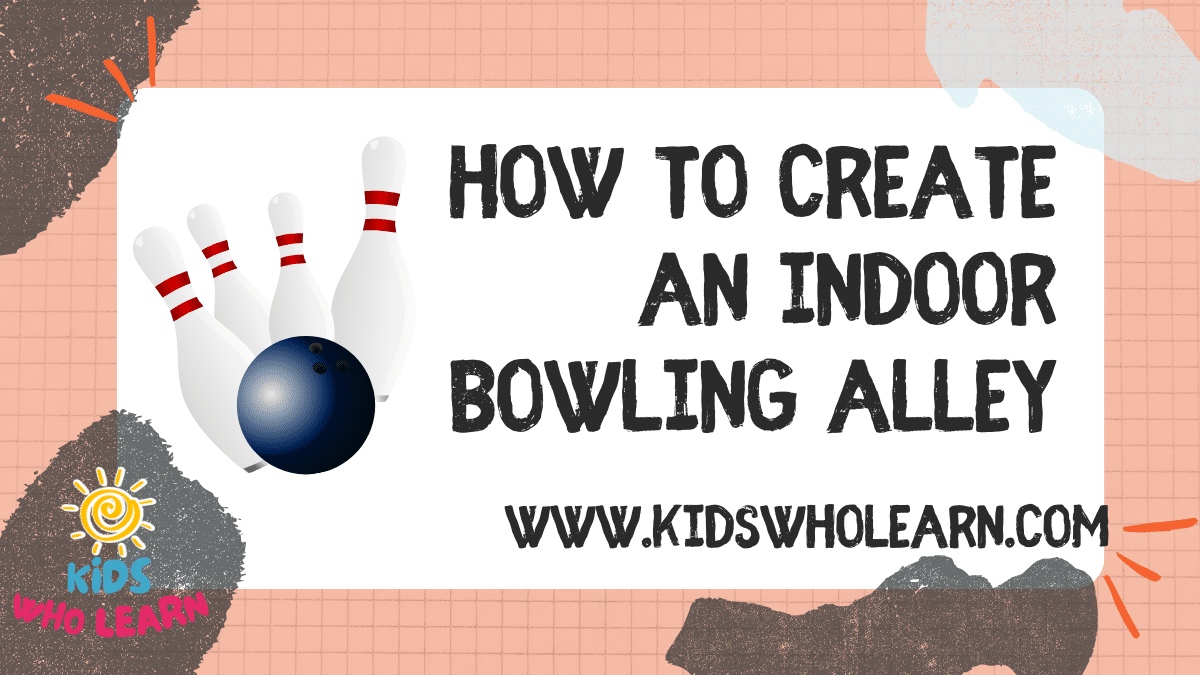Transforming a space in your home into an indoor bowling alley is an exciting project that can deliver endless hours of entertainment for friends and family. This undertaking involves careful consideration of the space you have available and the specific requirements for a functional bowling lane. You’ll need to ensure that your chosen area can accommodate the length and width of a standard alley, along with the necessary equipment.
In preparation for the construction phase, it’s also essential to understand the technical aspects of a bowling system, including the lane surface, ball return mechanisms, and pinsetters. Design aspects are not just about aesthetics; they also encompass the functional layout that contributes to the overall bowling experience. Planning your budget is integral, as it dictates the extent of the customization and quality of materials you can afford.
Once the planning is firmly in place, the actual implementation process commences. Step by step, you will see your vision become a reality, but it’s important to remember that regular maintenance and upkeep will be part of your responsibilities as well. This includes dealing with wear and tear on equipment and occasionally updating your space to keep the alley fresh and inviting. To maximize usage, you might also consider marketing your bowling alley for events and integrating community-oriented features.
Key Takeaways
- Accurate space analysis and thorough planning are crucial for a successful indoor bowling alley setup.
- Investing in quality installation and equipment ensures long-term enjoyment and ease of maintenance.
- Consideration for the user experience and potential event hosting can enhance the value of your indoor bowling alley.
Evaluating Space and Requirements
Before considering the installation of an indoor bowling alley, you must assess the spatial requirements and plan for necessary equipment and features. The specifics of building codes, layout design, equipment needs, and additional amenities are crucial for creating a functional and enjoyable space.
Assessing Building Requirements
Building Codes: Ensure compliance with local building codes, focusing on ceiling height and structural support. The typical ceiling height should be at least 10 feet to accommodate the arc of a thrown bowling ball.
Construction Parameters: Dimensions for a single lane are roughly 86 feet in length and 4.5 feet in width, not including seating or service areas. Verify the stability of the building’s infrastructure to support the weight of a custom bowling alley.
Designing the Layout
Lane Configuration: Plan for at least one lane; however, additional space is needed for multiple lanes. Include a minimum of 3 feet on either side for gutters and an 11 to 12 foot service aisle behind the lanes for machinery access.
Seating and Bar Area: Layout should account for a seating area for players and spectators, along with additional space if you’re considering a bar or refreshment area.
Planning for Essential Equipment
Pinsetter Machines: Each lane requires a pinsetter machine at the end. Allocate an additional 7 feet behind the lane for these machines.
Ball Returns: Ball returns run alongside the lanes, so incorporate them into your width measurements.
Bowling Equipment Storage: Designate an area for housing balls, shoes, and maintenance equipment.
Identifying Additional Features
Entertainment and Scoring: Install monitors for scoring, and consider additional screens for entertainment.
Furniture and Lighting: Include durable furniture and adequate lighting in your plans, which are essential for safety and ambiance.
Acoustic Treatment: Incorporate baffles or other sound-dampening materials to manage noise levels, especially important in a residential setting.
Technical Considerations
When designing an indoor bowling alley, the technical aspects are vital for ensuring a seamless bowling experience. From the surface of the lanes to the pinsetting and ball return mechanisms, each component must be carefully chosen and properly installed.
Lane Surface and Material
Your lane surface is critical for consistent ball movement. Most professional lanes use a high-quality, smooth maple or synthetic surface, with the former being a choice of traditionalists and the latter favored for its durability and lower maintenance. For instance, US Bowling provides a range of synthetic lanes with customizable designs. Remember that the approach area must also be of the same material and quality for a uniform experience.
- Material Options:
- Maple Wood
- Synthetic Laminates
Pinsetter Mechanism
The pinsetter is an essential machine that resets the pins after each ball is thrown. You’ll likely need an automatic pinsetter like those supplied by US Bowling or Fusion Bowling, with popular models including string and free-fall systems. Ensure that the installation includes proper electrical and mechanical interfaces to avoid malfunctions during operation.
- Types of Pinsetters:
- String Pinsetter
- Free-Fall Pinsetter
Ball Return System
Ball returns swiftly and safely deliver the ball back to the player. A well-designed system includes a lift mechanism and a conveyance track that should be both reliable and quiet. Check the specifications of systems provided by vendors such as Fusion Bowling to ensure compatibility with your lane and pinsetter setups.
- Mechanism Components:
- Lift Device
- Return Track
Scoring Technologies
Modern bowling alleys benefit from the latest scoring systems that automatically calculate and display scores. Choose a system that is user-friendly and has the capability to integrate with other alley technologies. Some systems offer additional features like graphic animations and player statistics.
- Features to Consider:
- Automatic Pin Detection
- Integration with Alley Management Software
For your bowling installation to function flawlessly, each of these technical components must work in concert. Selecting the right materials and equipment from reputable providers like US Bowling or Fusion Bowling is just the beginning. Paying attention to the specifics of installation and compatibility between systems ensures an enjoyable and smooth bowling experience.
Design and Aesthetics
Design and aesthetics are critical in shaping the atmosphere and functionality of your indoor bowling alley. This is where your personal taste merges with practical design to create a space that’s both inviting and entertaining.
Customizing Bowling Alley Design
When envisioning your custom bowling alley, it’s essential to consider both the layout and the mechanical components. You have various options for the lane material and approach area, each affecting the game’s quality and visual appeal.
- Lane Material: Traditional maple wood offers authenticity, while synthetic options provide durability.
- Approach Area: Ensure this space is non-slippery for safety and performance.
Incorporate state-of-the-art pinsetter machines to streamline the experience. Your scoring system can also be integrated into custom-designed overhead monitors that match the alley’s overall aesthetic.
Tip: For a touch of luxury, install personalized monitors with interactive software.
- Custom Features:
- Monitors: Personalized scoring displays
- Seating: Comfort-driven arrangements
- Ball Return: Customized to complement the alley’s design
Selecting Décor and Themes
Your choice of décor will set the mood and influence the ambiance. Opt for dynamic lighting systems that can customize the atmosphere for different occasions, from casual play to competitive matches.
Create a cohesive theme to tie your space together:
- Vintage: Classic pinup art and retro neon signs
- Modern: Sleek lines and minimalist color schemes
Consider the furniture as part of your alley’s character. Opt for pieces that encourage conversation and relaxation between games.
- Seating Options:
- Couches: Plush, comfortable, and stylish
- Chairs: Ergonomic with ample cushioning
- Tables: Strategically placed for drinks and snacks
Remember, in designing your private bowling alley, your priority should blend entertainment and comfort seamlessly. Select elements that resonate with your personal style while catering to the functionality of bowling.
Financial Planning
To ensure the successful creation of an indoor bowling alley, you’ll need to carefully plan your finances. Key costs include construction, equipment, and labor, each contributing to the overall budget required. Accurately pricing these expenses ahead of time can secure funding and manage expectations for returns on investment.
Calculating Costs and Pricing
Construction: Estimating construction costs is critical. To start, itemize each phase of your project, from initial groundwork to interior finishing. Obtain quotations from contractors to get a clear picture of the expected expenses.
- Ground preparation: Varies depending on location
- Building structure: $50 – $150 per square foot
- Interior lanes and installation: $20,000 – $30,000 per lane
Labor: Costs vary by region and project complexity.
| Type of Labor | Estimated Cost Range |
|---|---|
| General labor | $20 – $30 per hour |
| Specialized contractors | $70 – $150 per hour |
Pricing Page: Once construction and labor costs are estimated, calculate the pricing for customers. Bowling alley pricing should cover ongoing costs while remaining competitive.
- Bowling per game: $4 – $6
- Shoe rental: $3 – $5
- Hourly lane rental: $25 – $40
Consider a tiered pricing strategy for peak and off-peak hours to maximize revenue.
Procuring Equipment and Supplies
Bowling Equipment:
- Balls: Offer a range of ball weights, typically between 6 and 16 pounds. The cost per ball is approximately $50 – $250, dependent on quality and brand.
- Pins: A standard set of 10 pins can range from $100 to $150.
- Shoes: A pair of bowling shoes cost between $30 and $100. Order in bulk for better pricing.
Compile a list of reliable suppliers for these supplies and keep track of inventory to maintain a seamless bowling experience for your customers. Implementing cost-effective procurement strategies is vital for operating within your budget.
Implementation Process
Creating an indoor bowling alley is a complex process, requiring careful planning from pre-installation site visits to managing the final setup. Each step is critical to ensure a successful project.
Conducting Pre-Installation Site Visits
Before you can start building your home bowling alley, it’s essential to conduct thorough pre-installation site visits. During these visits:
- Assess the Space: Measure the size of your intended area to make sure it can accommodate standard bowling lanes, which typically require around 86 feet in length and 6 feet in width per lane.
- Check Infrastructure Requirements: Ensure that the structural support and utilities like electricity and HVAC are sufficient for the installation.
Navigating Delivery and Assembly
The logistics of delivery and assembly are pivotal in the bowling alley installation process.
- Scheduling Delivery: Align delivery schedules with your project timeline to avoid delays.
- Use checklists to account for all components:
- Bowling lanes and pinsetter machines
- Scoring systems and seating
- Ball returns and other accessories
Managing Installation and Setup
The final phase is the installation and setup of your indoor bowling alley.
- Constructing the Foundation: Start with the lanes and service aisle, ensuring they are level and properly aligned.
- Installing Equipment: Install the pinsetting machinery, ball returns, and scoring systems, proceeding with caution and precision.
- Testing: Conduct a comprehensive testing phase to check the functionality of all electronic systems and mechanical components.
Remember, a professional installation team is best equipped to handle the complex tasks involved, ensuring your home bowling alley is installed to the highest standards.
Maintenance and Upkeep
Proper maintenance ensures the longevity of your indoor bowling alley and optimal performance of equipment.
Routine Service and Repairs
You should conduct weekly inspections and cleaning of your bowling lanes to prevent dirt and oil build-up. Focus on the following areas:
- Service Aisle: Keep the service aisle clear of debris to allow easy access for repairs.
- Bowling Equipment: Clean bowling balls and shoes regularly. Oil patterns on lanes should be maintained according to the type of play expected.
- Pinsetter Machine: Monthly servicing of pinsetters is crucial. Check for worn or broken parts and lubricate necessary components.
Here is a simple maintenance checklist for your reference:
| Task | Frequency | Notes |
|---|---|---|
| Lane Cleaning | Daily | Use a certified lane cleaner. |
| Pinsetter Check | Weekly | Look for misalignments or jams. |
| Equipment Inspection | Monthly | Review all bowling equipment for wear and damage. |
| Parts Replacement | As needed | Especially for pins and balls showing significant wear. |
Periodic Equipment Updates
To maintain a competitive edge and ensure safety, you must update your equipment periodically:
- Training for Staff: Ensure your staff receives regular training on new features and maintenance techniques.
- Update Schedules: Implement a schedule for periodic updates to both bowling equipment and the scoring system.
- Invest in New Technology: Consider innovations like synthetic lanes or advanced pinsetter machines that require less frequent repairs.
By adhering to these maintenance guidelines, you can keep your indoor bowling alley in top condition, providing a quality experience for your patrons.
Creating a Bowling Experience
When designing an indoor bowling alley, your priority is to foster an engaging environment that entices bowlers to return. Achieving this means focusing on more than just the lanes; it requires integrating entertainment and social spaces, maintaining guest comfort and safety, and providing opportunities for training and events.
Integrating Entertainment and Social Areas
Your bowling alley should serve as a hub for both entertainment and socialization. For adults, consider incorporating a bar with a view of the lanes to foster conversation and relaxation. Seating areas should be plentiful and strategically placed to facilitate social interactions throughout the day and into the night. Include a variety of games and activities to keep children and non-bowlers entertained, ensuring that your facility offers something for everyone.
Ensuring Guest Comfort and Safety
Guest comfort is paramount. High-quality, comfortable furniture should be selected for seating areas, and the interior climate controlled for therapeutic comfort. Lighting plays a crucial role in both safety and ambiance; it should be bright enough to ensure safety but also adjustable to create different moods for day and night play. Safety extends to equipment as well; keep a supply of well-maintained bowling shoes and ensure that all areas are accessible and adhere to safety codes.
Offering Training and Events
To attract guests interested in improving their game, your alley must provide comprehensive training options. Consider offering coaches for personal instruction, and install technology to help players analyze and improve their techniques. Regularly scheduled events can also attract regular visitors and create a sense of community. Hosting tournaments or themed bowling nights can provide both entertainment and a competitive atmosphere. It’s also beneficial to include programs specifically designed for children to learn and enjoy the sport, which will foster a new generation of bowlers. Offering exercise-focused bowling options can appeal to those looking for a fun way to stay active.
Marketing and Promotion
Effective marketing and promotion are vital for attracting patrons to your indoor bowling alley and building a loyal customer base. It’s important to not only advertise your services but also to engage with the community and create events that generate excitement and competition.
Building an Online Presence
Creating a strong online presence is fundamental to your marketing strategy. Start by crafting a professional website that showcases your facilities, pricing, and any special promotions. Make sure your contact information is easy to find and the site is optimized for mobile users.
Social Media: Develop profiles on platforms like Facebook, Instagram, and Twitter to connect with your audience. Regular posts that feature high-quality images of your location, events, and special offers help keep your audience engaged. Utilizing paid ads can also increase your visibility on these platforms.
SEO and Content Marketing: Enhance your search engine visibility by implementing search engine optimization (SEO) techniques. Publish blog posts related to bowling tips, event information, and the benefits of bowling to drive traffic to your site.
Hosting Tournaments and Leagues
Tournaments: Organizing tournaments can attract competitive bowlers and teams looking for a venue to showcase their skills. Use your online platforms to announce upcoming tournaments and create an easy online sign-up process.
| Tournament Type | Description | Audience |
|---|---|---|
| Open | Accessible to all skill levels, promoting inclusivity. | Broad range of bowlers |
| Invitational | Targets top bowlers for high-level competition. | Experienced bowlers |
Leagues: Establishing leagues encourages regular visits and fosters community engagement. Offer leagues of different levels and themes to cater to various demographics.
- Casual Leagues: For social bowlers, focusing more on fun and less on competition.
- Competitive Leagues: For serious bowlers, emphasizing skill improvement and rivalry.
Promote these events with flyers, emails, and social media to maximize participation. Form partnerships with local businesses for sponsorship opportunities to enhance branding and promotion efforts. Remember to capture the excitement with photos and update your online platforms regularly to keep the momentum going.
Frequently Asked Questions
When considering the installation or creation of a home bowling alley, you may have several questions regarding the specifics of construction, cost, and space requirements. The following frequently asked questions will provide you with clear, detailed information tailored to your needs.
What are the typical dimensions for a home bowling alley?
A standard bowling lane used in professional settings is approximately 60 feet long and 3.5 feet wide. However, for a home bowling alley, you might scale this down to fit your available space, ensuring there’s adequate room for the approach, pinsetters, and seating area.
How much does it generally cost to install a bowling alley at home?
The cost to install a bowling alley at home can vary significantly, ranging from $120,000 to over $200,000. This cost can fluctuate based on materials, size, and the inclusion of additional features such as scoring systems and aesthetic choices.
What materials are needed for building a DIY bowling lane for personal use?
For a DIY bowling lane, you’ll need a solid, flat foundation such as concrete, hardwood or synthetic lane surfaces, a pinsetter or hand-set pins, and a ball-return system. High-quality wood or synthetic materials for the lane and a durable approach area are critical.
Can a mini bowling alley be a cost-effective alternative to a full-size lane?
Yes, a mini bowling alley can be a more affordable option compared to a full-size lane, requiring less space and materials. Mini bowling lanes also use smaller balls and pins, which can significantly reduce installation costs.
What steps are involved in constructing a bowling lane in your backyard?
Constructing a bowling lane in your backyard involves several steps: preparing the site with a level and sturdy foundation, installing the lane surface and approach, setting up pinsetter mechanics, and ensuring proper ball return. Consideration of weatherproofing will also be crucial for outdoor lanes.
Is it feasible to expect profitability from installing a bowling alley in a residential setting?
Creating a home bowling alley is typically undertaken for personal enjoyment rather than profitability. Charging for play to offset costs is unlikely in residential settings due to limited foot traffic and competition with commercial bowling centers.









